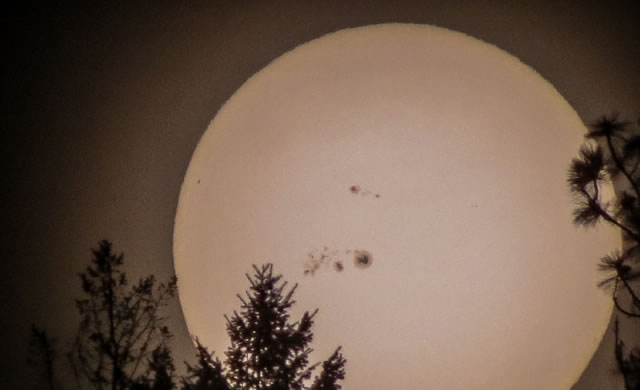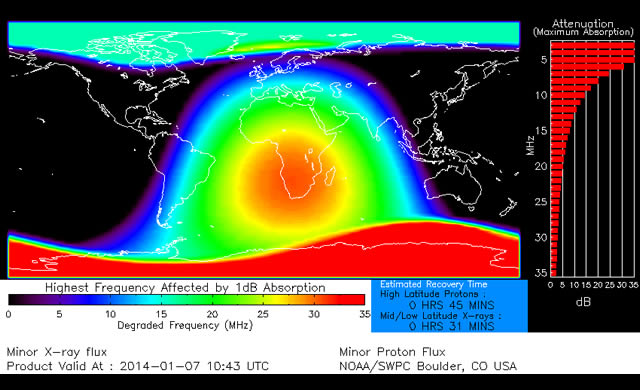
Credit: Rocky Raybell
Una delle più grandi macchie solari apparse in questo ciclo solare sta rapidamente ruotando verso il centro del disco della nostra stella, mettendo quindi la Terra sulla traiettoria di qualsiasi potenziale eruzione. Nella foto scattata dal fotografo Rocky Raybell nei pressi di Washington poche ore fa, si noti la regione attiva denominata AR1944.
La zona appare un complesso agglomerato di zone scure, di dimensioni almeno tre volte il pianeta Terra. Tale osservazione si rivela un’ottima occasione anche per gli astronomi amatoriali muniti degli appositi telescopi. Sebbene la macchia solare sia stata relativamente tranquilla fino ad ora, è molto probabile si possano verificare eventi nelle prossime ore. La regione attiva ha un’instabile campo magnetico “beta-gamma-delta” e può eruttare in qualsiasi momento. Il NOAA rilascia previsioni pari al 75% per possibili brillamenti di classe M e del 30% di classe X, per oggi 7 gennaio 2014.
Nel frattempo è in corso una tempesta solare di radiazioni di minore entità, classificata S1, sempre dal NOAA. Tale evento si verifica circa una cinquantina di volte nell’arco di un ciclo solare. E’ inoltre in corso Radio Blackout R2. E’di pochi minuti fa il rilevamento di un nuovo brillamento solare piuttosto forte, di classe M7.24. Aggiornamenti in corso, rimanete sintonizzati.
One of the biggest sunspots in years is crossing the center of the solar disk, putting Earth in the way of potential eruptions. Rocky Raybell photographed the active region named “AR1944” yesterday from his backyard in Keller, Washington.
The sprawling sunspot contains dozens of dark cores, the largest big enough to swallow Earth three times over. This makes it an easy target for amateur solar telescopes. Raybell used a backyard ‘scope capped with a Baader solar filer to capture both the sunspot and trees in the foreground. Photo details may be found here. Although AR1944 has been mostly quiet for days, flares are in the offing. The sunspot has an unstable ‘beta-gamma-delta’ magnetic field that could erupt at any time. NOAA forecasters estimate a 75% chance of M-class flares and a 30% chance of X-flares on Jan. 7th.
At the moment there is a minor S1 class Space Radiation Storm active. This happens about 50 times in one solar cycle. Radio Blackouts: R2. Update: The maximum x-ray flux of the past two hours is: M7.24 – Updates in progress, stay tuned.
Source/Continue reading → SpaceWeather.com






















